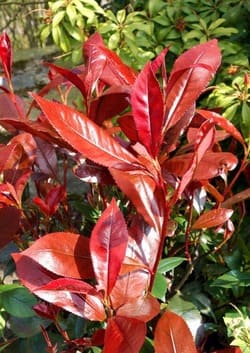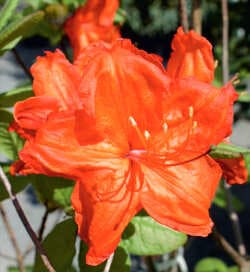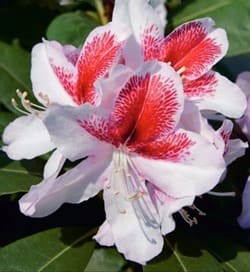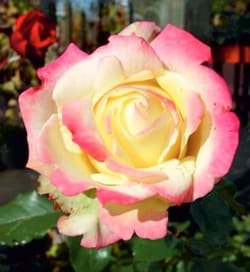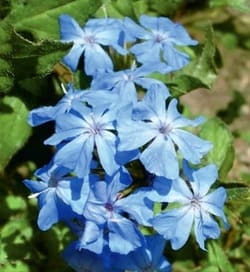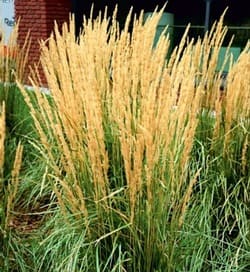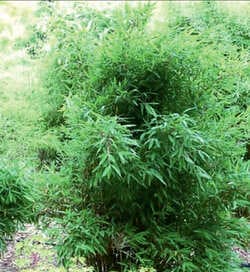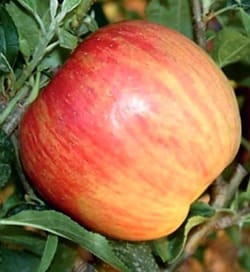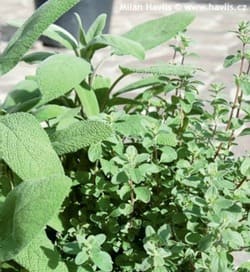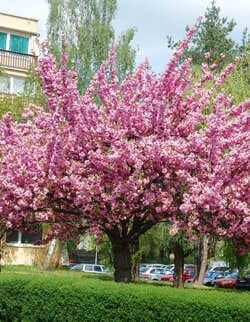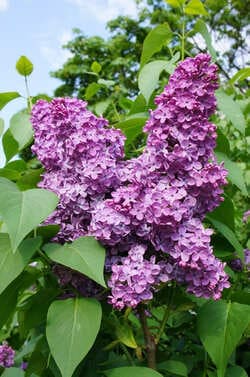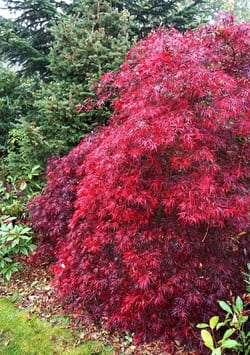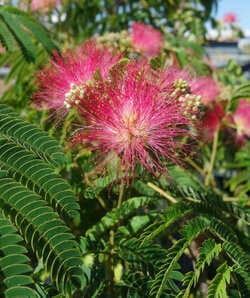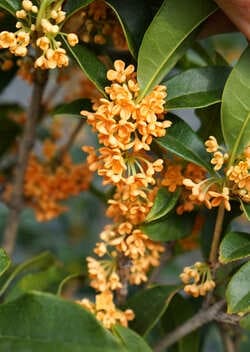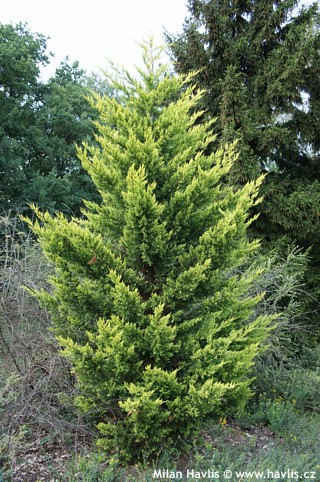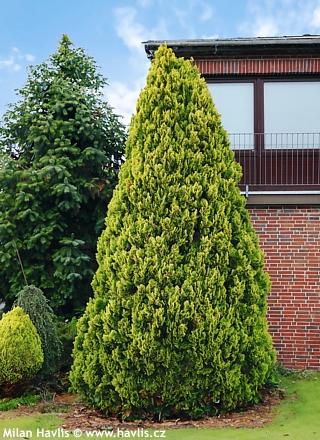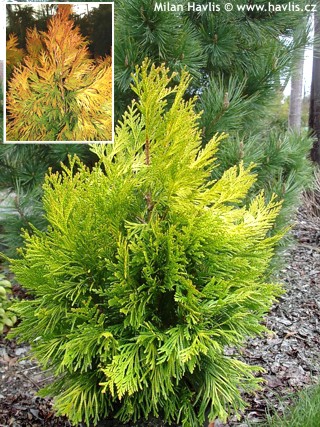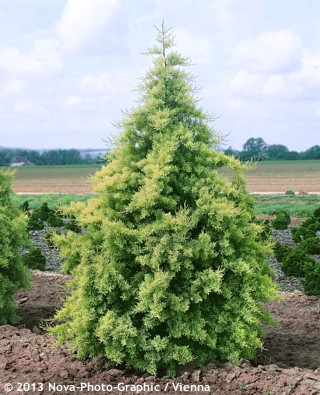
Cupressus (Hesperocyparis) arizonica 'SULPHUREA' Arizona cypress
Cupressus
The true cypress (Cupressus) is like an old wanderer among conifers – quiet, dignified, with a history reaching deep into antiquity. Or perhaps it was the other way around – a companion to many wanderers who once journeyed from town to town and rested in its resin-scented shade on hot days to gather strength for the road ahead. Its natural habitat spans the sunny slopes of North America, the Mediterranean, and Asia, where it became part of cultural landscapes and religious rituals. Its American counterpart – the Arizona cypress – originates from the southwestern United States and northern Mexico, growing at elevations up to 2000 meters. Among its relatives, it’s something of a rebel, refusing the typical green foliage and instead wearing a blue-green to silvery-blue coat that sparkles like a frosty jewel in winter sunlight and acts as a cooling veil in summer. It was first described in 1880 by American botanist George Engelmann (1809–1884), who contributed significantly to the documentation of western U.S. flora. Much later, only in 2009, it was formally reclassified into the genus Hesperocyparis based on genetic studies that separated New World species from Old World cypresses, reflecting its western origin and distinct DNA and morphology.
In medieval Europe, cypress trees became beloved features of monastic gardens, where their quiet shade and upright growth invited contemplation and rest. In Islamic culture, the cypress symbolizes humility and eternity – its slender silhouette often appears in Persian gardens and miniatures, never breaking, only gently bowing to the wind. In Mexico, where Arizona cypress is native, cypresses are planted near churches and town squares as green guardians that lend a ceremonial and peaceful atmosphere. And while in ancient Greece and Rome the cypress was associated with eternity and protection, today its evergreen branches and elegant form more often symbolize vitality and the connection between earth and sky. In some parts of the United States, it’s even used as a Christmas tree – its symmetrical shape and subtle fragrance evoke classic spruces, but with added elegance and a touch of exotic charm.
The cultivar Sulphurea of the Arizona cypress was bred in France in 1963 and stands out like a sunbeam among conifers – its young shoots shine with a bright yellow hue that gradually matures into a warm chartreuse tone but never fades completely. It grows upright, with looser branching than ‘Fastigiata’, forming a regular, conical crown. The foliage is soft to the touch and releases a lovely and distinctive resinous scent on warm days or when brushed. The bark is reddish-brown, peeling in thin sheets like aged parchment. This cultivar is prized not only for its colour, which can brighten shaded corners of the garden or provide contrast to more typical green-leaved trees and shrubs. It usually reaches a height of 5–10 meters depending on site conditions, with annual growth of around 30 cm.
‘Sulphurea’ is an ideal choice for gardeners looking to bring light and warmth into the landscape, even in the winter months. Its yellow tones stand out beautifully against dark conifers, among red-leaved shrubs, and pair well with variegated deciduous foliage. It combines effortlessly with ornamental grasses, tall salvias, lavender, or blue-flowering perennials that further enhance its colour. In modern plantings, it works well as a solitary specimen or as part of a colour-themed hedge. Thanks to its luminous foliage, it acts as a natural reflector in the garden – drawing attention without being garish. It responds well to shaping, although its natural habit is so elegant that pruning is often unnecessary. If shaping is desired, pruning should begin in late spring and continue until mid-autumn, avoiding cuts into older wood – not only will bare branches fail to regrow, but they also release sticky resin that remains soft for a long time and can easily stain clothing.
It’s not demanding in terms of care, but it does have its preferences. It loves sun – the more, the better. The soil should be well-drained, ideally light and sandy, with a neutral to slightly alkaline pH, though it tolerates acidic conditions as well. It dislikes waterlogging, so heavy clay soils require drainage. Watering is only necessary during prolonged dry spells – otherwise, it makes do with what the sky provides. Its proven frost resistance is –27 °C (USDA zone 5), and according to enthusiastic growers in colder regions, it has withstood several days of –30 °C without issue. It also grows well in containers, provided they are large enough to accommodate its roots, with regular watering and frequent feeding.
Last update 25-01-2013; 23-09-2025









